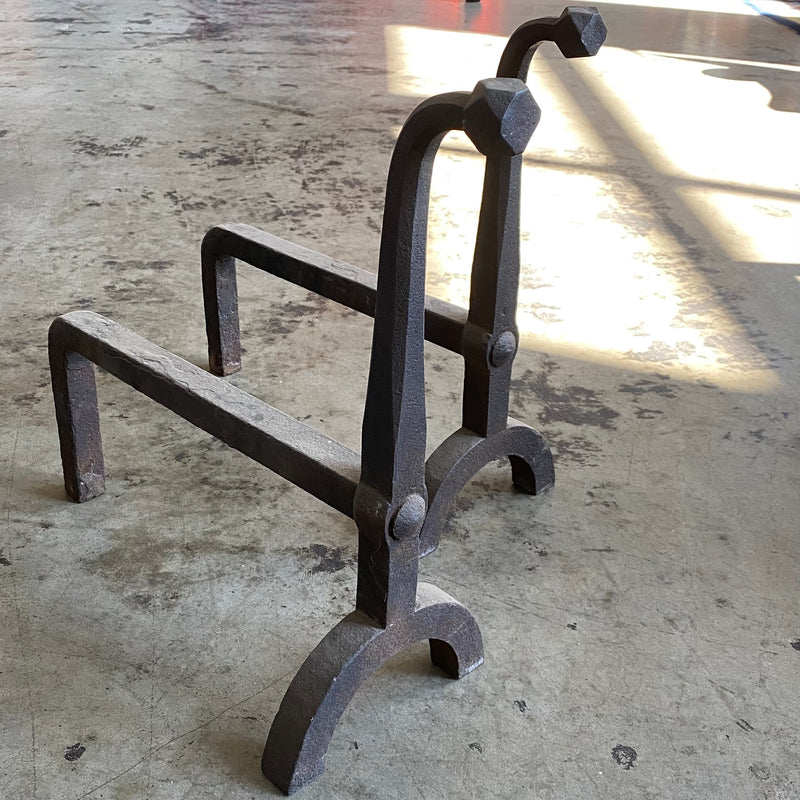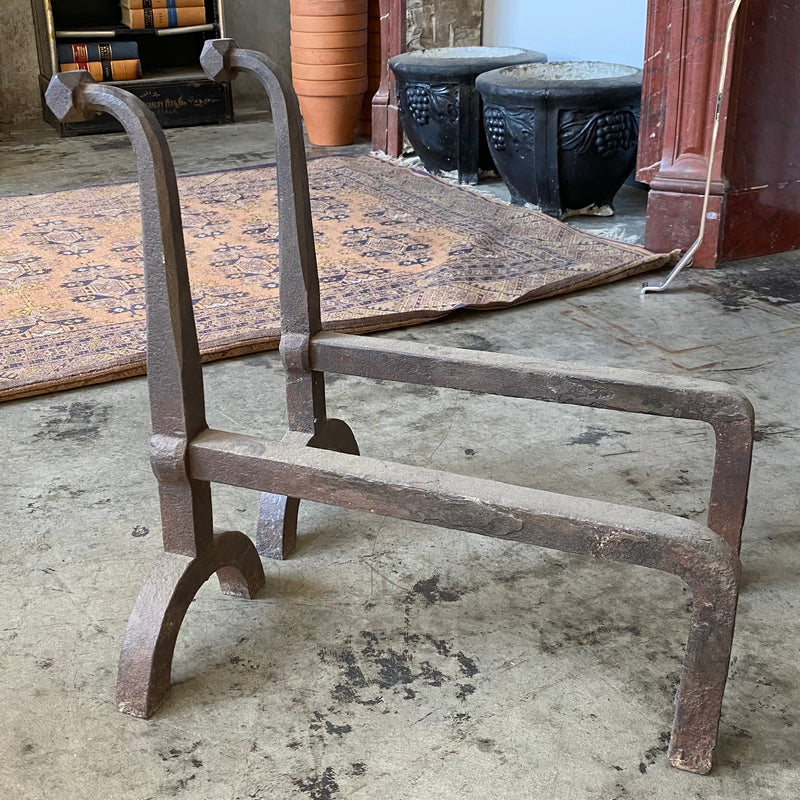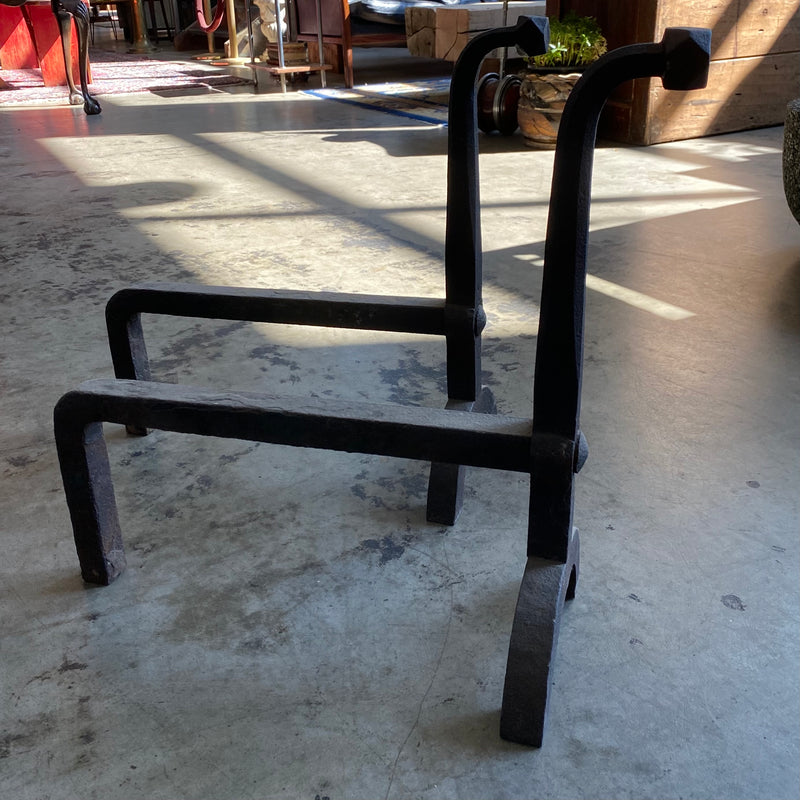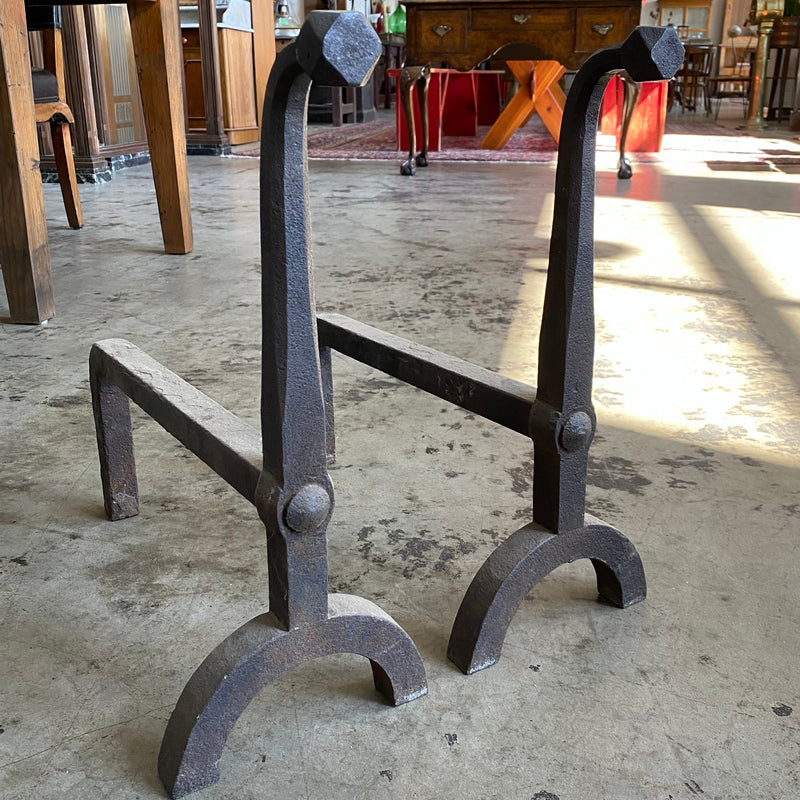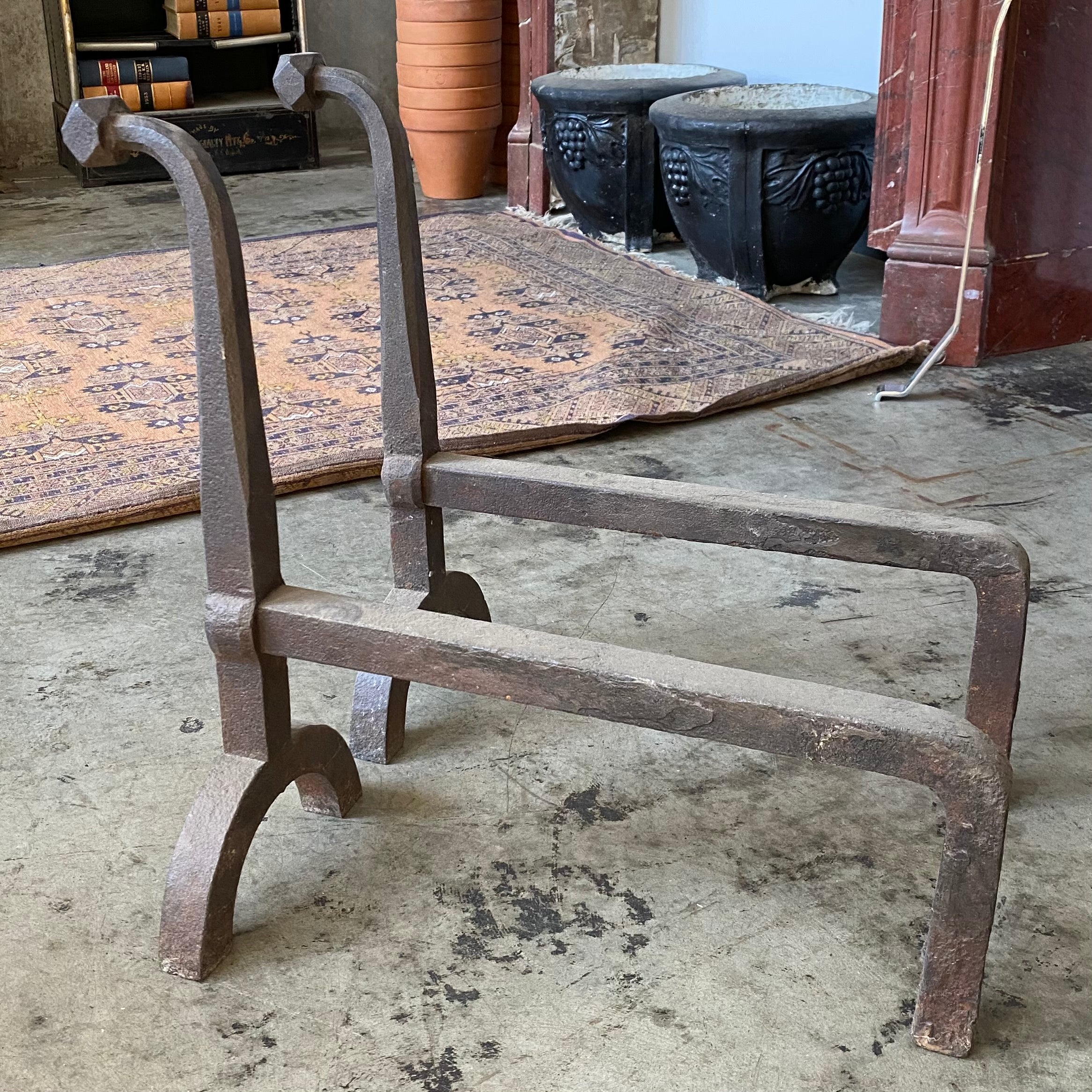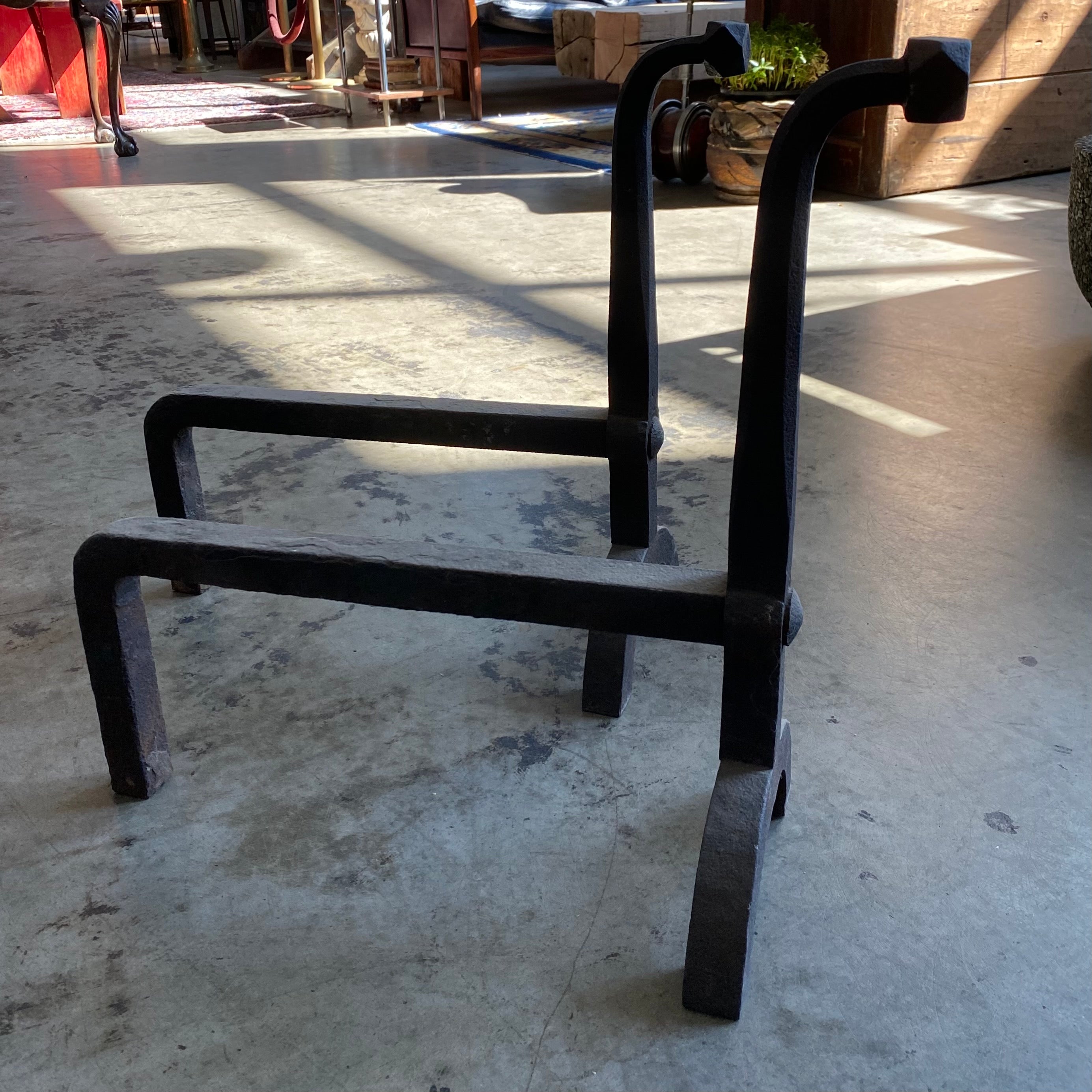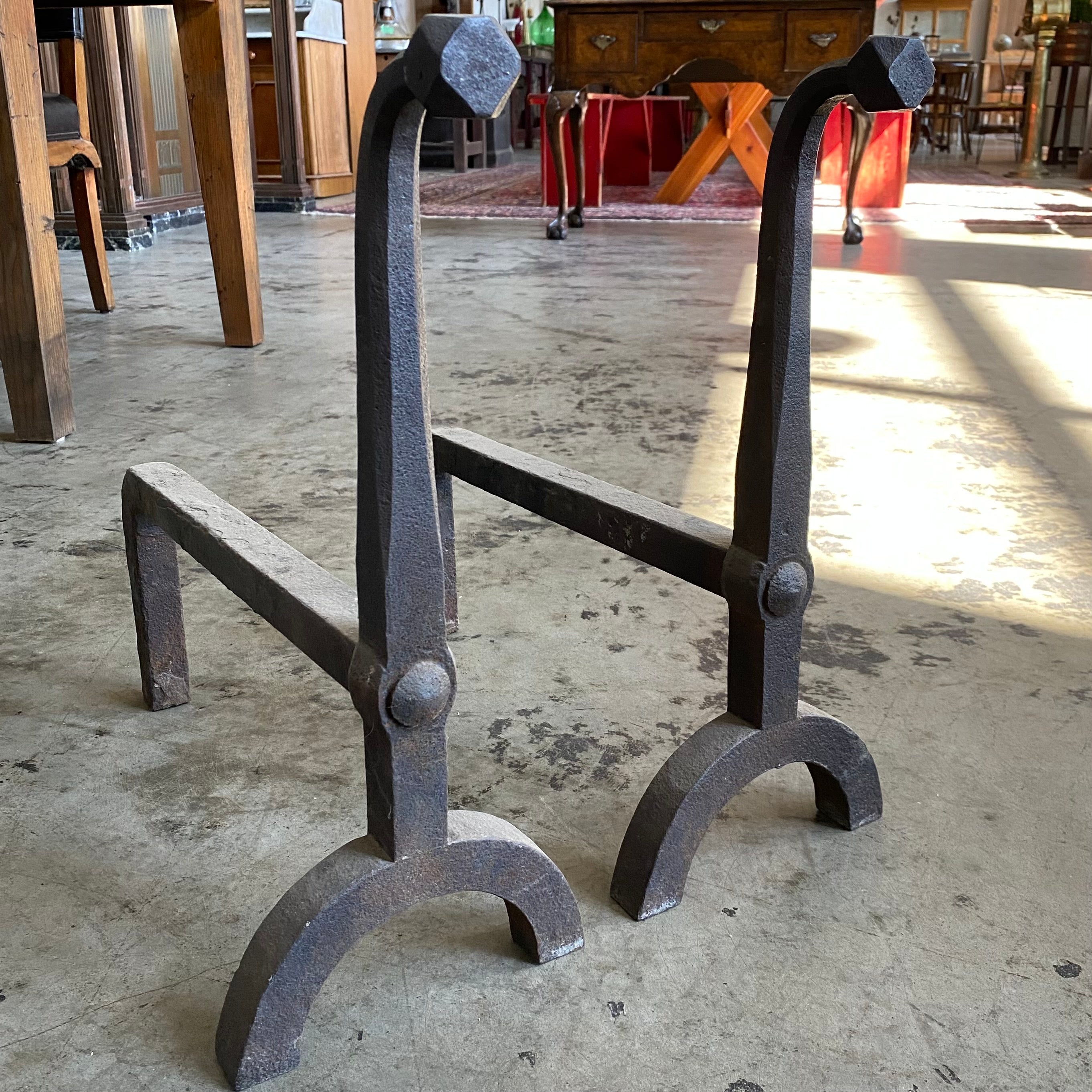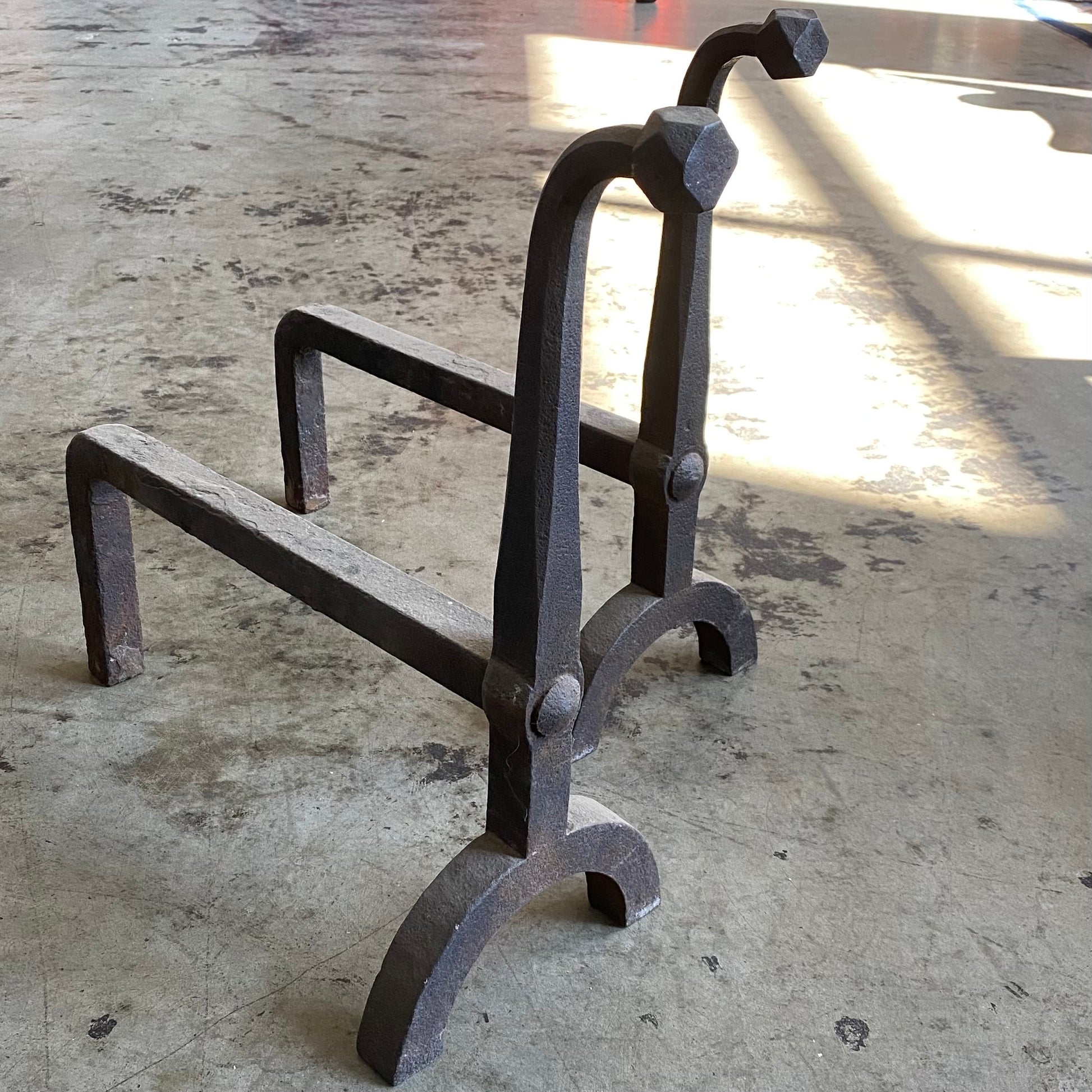
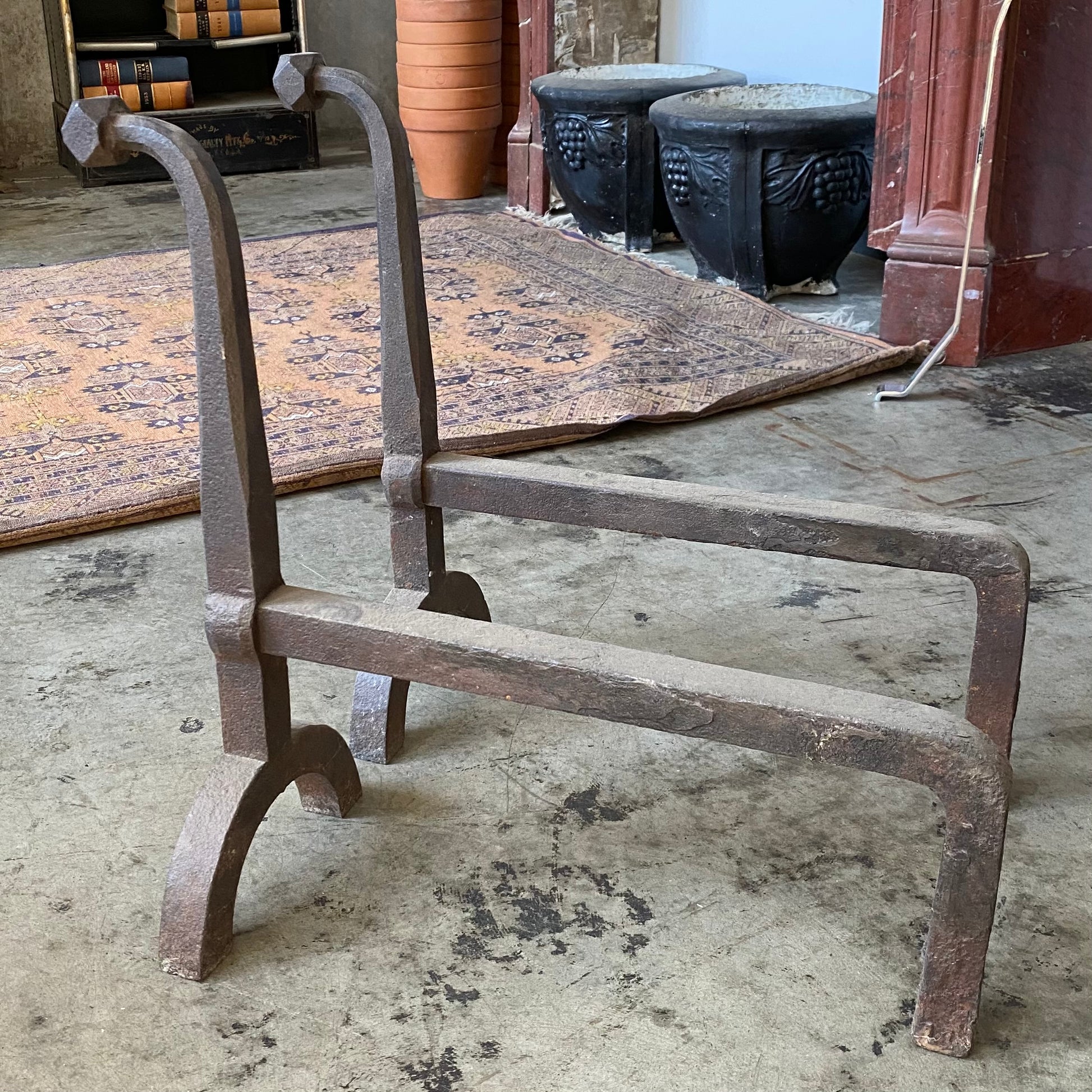
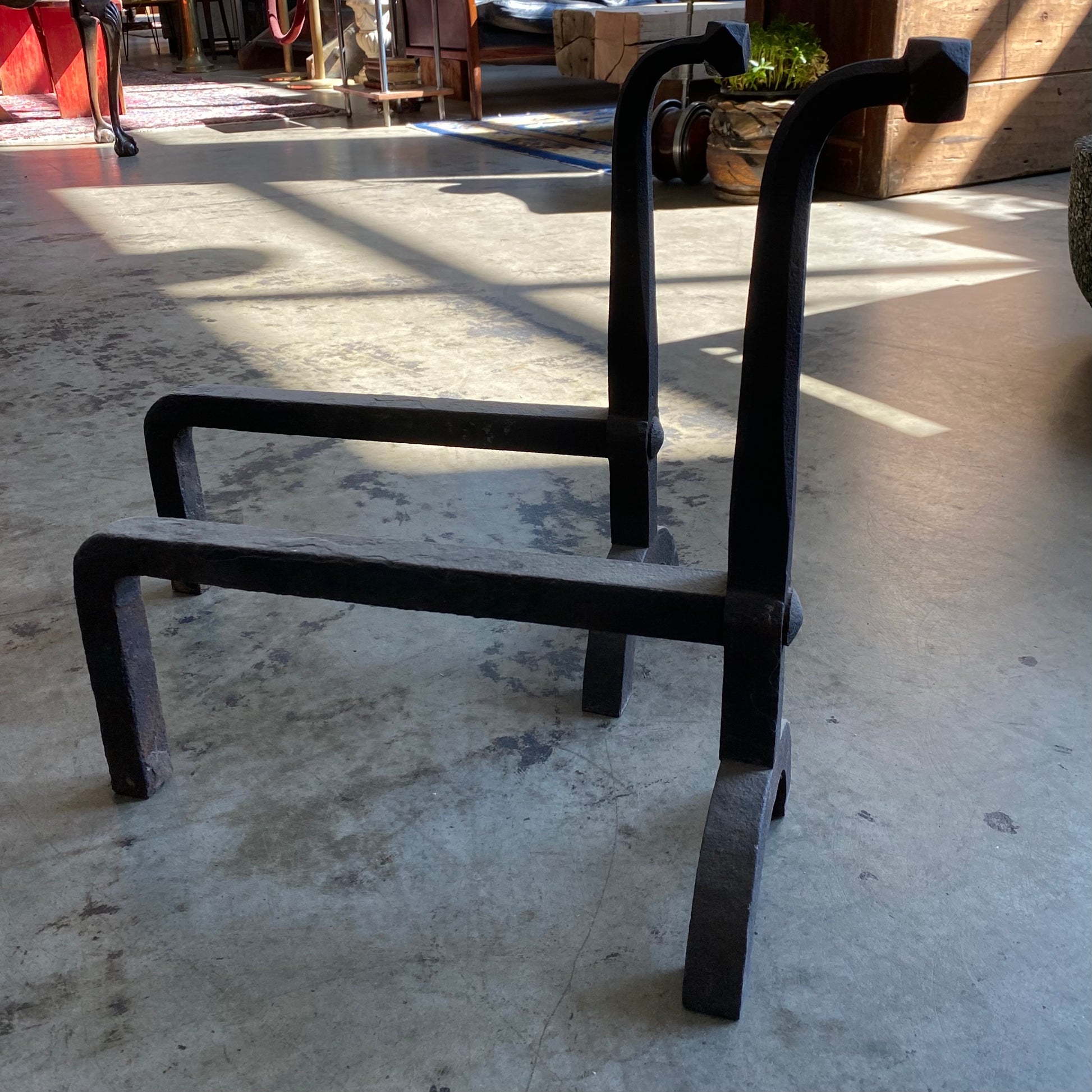
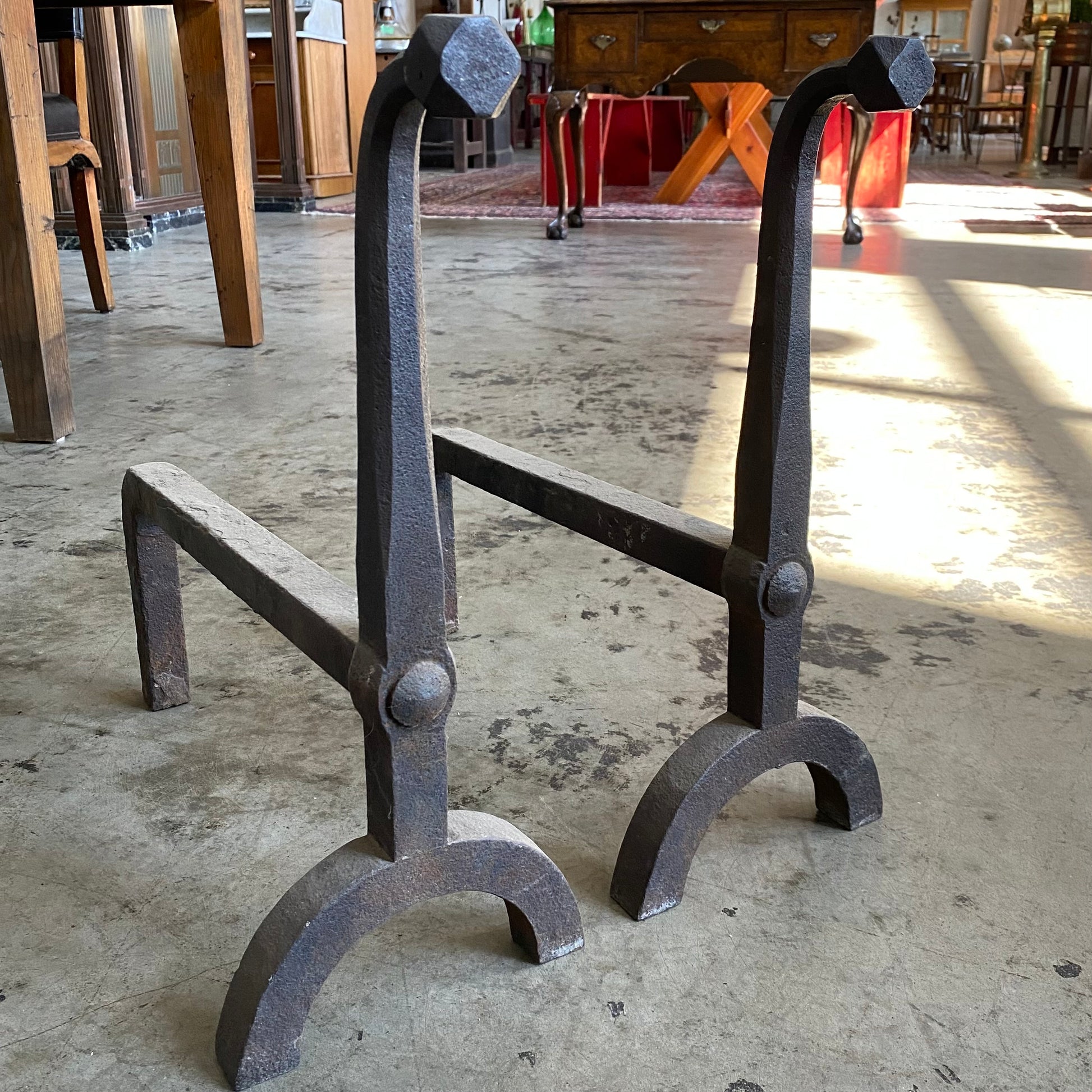
Pair of 1920 Cast Iron Andirons
- Regular price
- $450.00 CAD
- Sale price
- $450.00 CAD
- Regular price
-
Description
An Andiron (sometimes known as a dog-iron) is a bracket support that is normally found in pairs, on which logs are laid for burning in an open fireplace. They help with air circulation under the firewood, allows better burning & causes less smoke. They generally consist of a tall vertical element at the front, with at least two legs which stops the logs from rolling out into the room. It has one or more low horizontal pieces stretching back and serving to hold the logs off the bottom of the fireplace. Before the Renaissance, European Andirons were almost always made entirely of iron and were of comparatively simple design. Andirons and firebacks were one of the first types of object to be commonly made in cast iron, a trend which in England began in the 1540s.
19.50" X 18.00" X 8.00"
PRICE FOR SET

